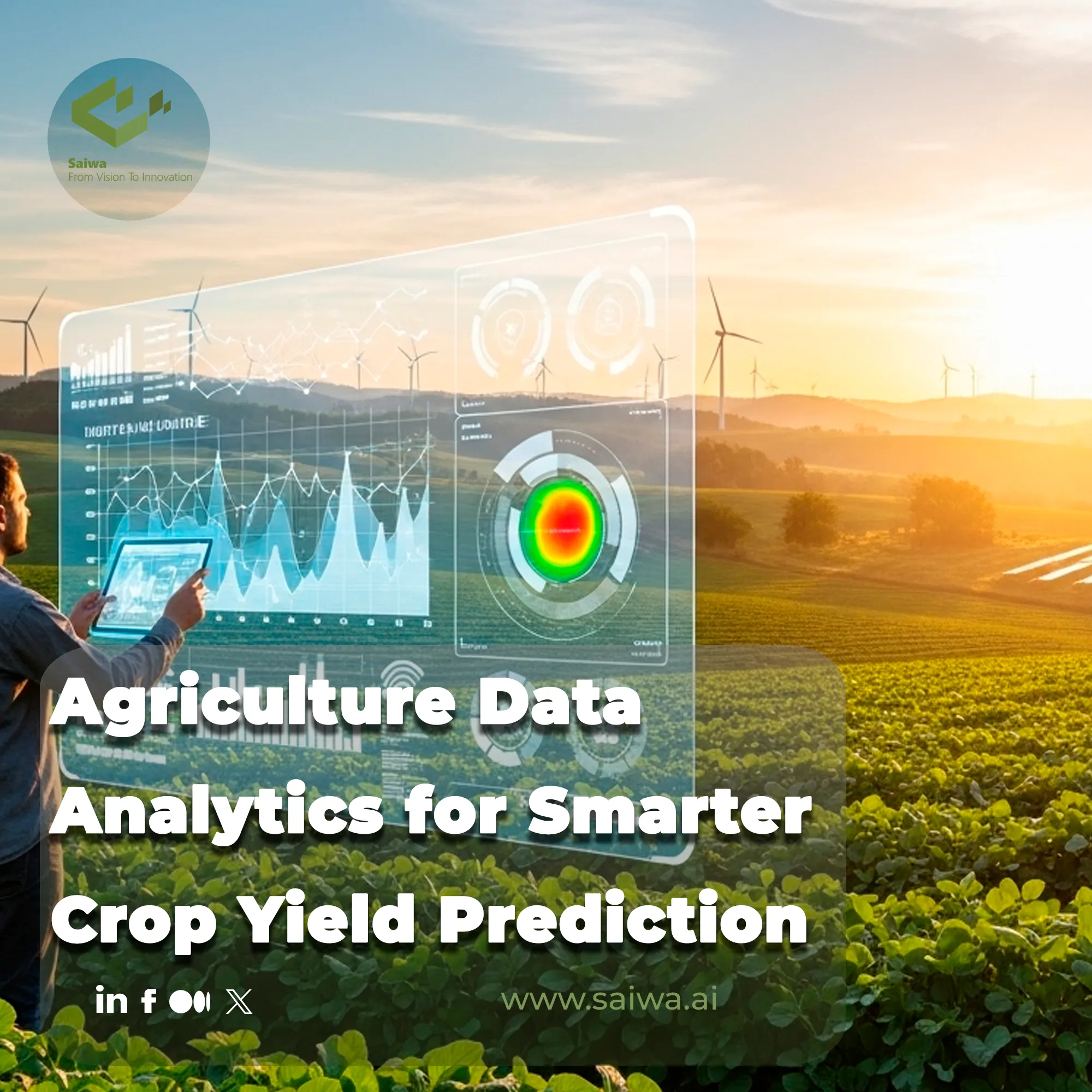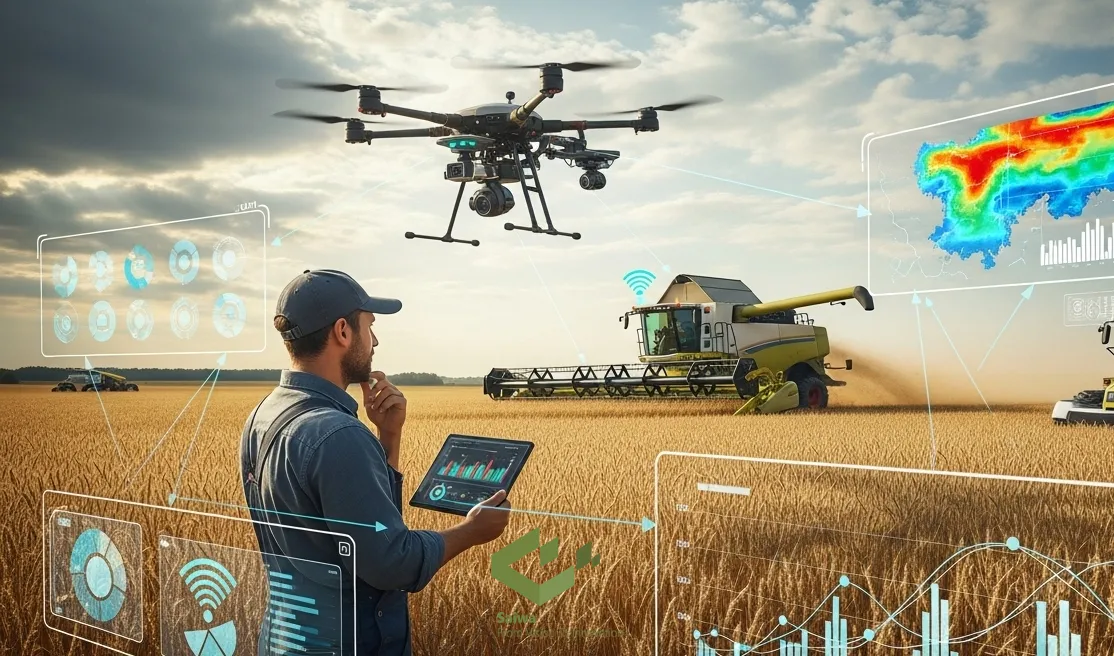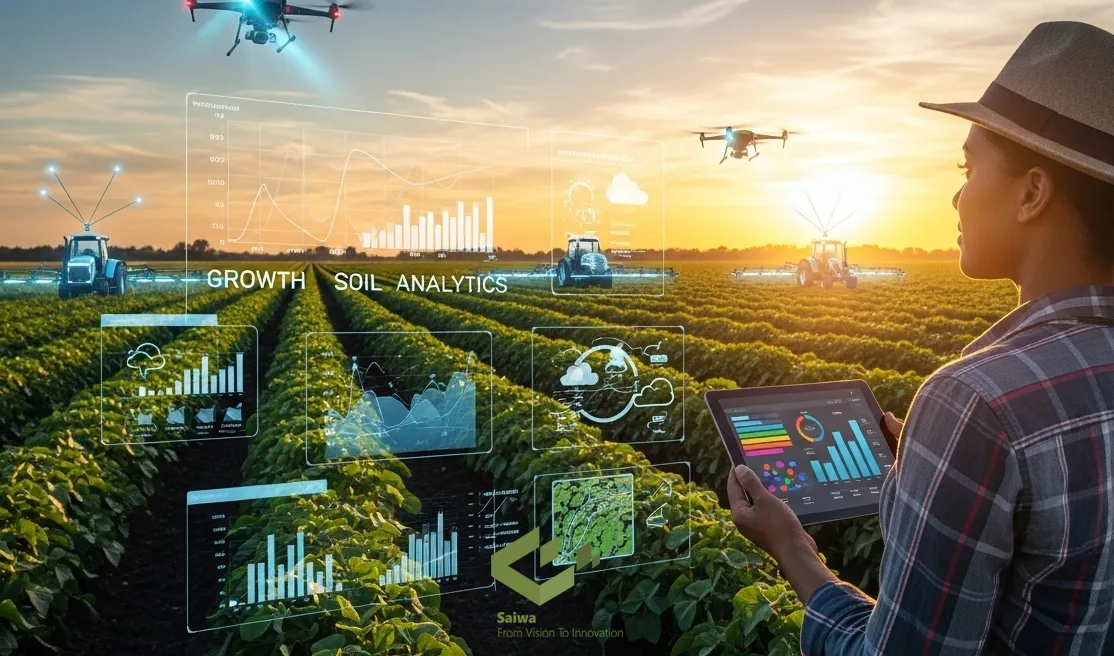Harnessing Agriculture Data Analytics for Smarter Crop Yield Prediction

Traditional farming intuition is powerful, but it faces limitations in a world demanding greater efficiency and sustainability. Predicting crop yields has often been a blend of experience and guesswork, subject to the unpredictable whims of nature. At Saiwa, we are transforming this paradigm by applying advanced analytics to agriculture. Our specialized Sairone platform turns complex data streams into clear, predictive power for farmers. This article will guide you through the core principles of Agriculture Data Analytics in Crop Yield Estimation, showing how this technology creates a more predictable and profitable future for farming.
How Data Analytics Helps Forecast Harvests Accurately?
At its core, data analytics replaces ambiguity with statistical confidence. Instead of relying solely on past experience, farmers can now leverage a continuous flow of data from their fields to build dynamic forecast models.
This process involves collecting information on dozens of variables, from soil nitrogen levels to canopy temperature, and using algorithms to identify how these factors collectively influence growth and eventual yield.
By understanding these complex relationships, predictive models can forecast harvests with increasing accuracy throughout the growing season, empowering growers to make proactive decisions on irrigation, fertilization, and pest control.

Collecting and Combining Data
The accuracy of any prediction model hinges on the quality and diversity of its data. A holistic view of the farm ecosystem is necessary, which requires integrating information from multiple advanced sources. Key inputs include the following:
Sensors and Satellites: Watching Crops in Real Time
In-field IoT sensors provide granular, real-time measurements of soil moisture, temperature, and nutrient levels. Simultaneously, satellite imagery offers a bird’s eye view, capturing data across vast areas. This allows for constant plant health monitoring and identifies variability across a field that would be invisible from the ground.
Weather and Climate Data: Understanding Environmental Effects
Modern analytics platforms integrate historical weather data with advanced meteorological forecasts. This helps models understand how critical environmental factors like rainfall, temperature fluctuations, and humidity will impact crop development, allowing for adjustments to be made before stress affects the plants.
Farm Management Records: Tracking Practices and Inputs
Every decision a farmer makes, from the specific seed variety planted to the timing and amount of fertilizer applied, is a valuable data point. Integrating these management records provides essential context for the models, helping to distinguish the impact of farming practices from environmental factors.
Combining Data from Multiple Sources
The true power of analytics emerges when these disparate datasets are combined. Machine learning algorithms are uniquely capable of sifting through this combined information to find subtle correlations and hidden patterns. This integrated approach provides a far more reliable basis for crop yield estimation than any single data source could offer alone.
Preparing and Selecting the Right Data
Raw data collected from fields and sensors is rarely ready for immediate analysis. It often contains inconsistencies, missing values, or irrelevant information that can mislead analytical models.
The principle of "garbage in, garbage out" is critically important here. Data preparation involves cleaning this information, correcting errors, and normalizing different data types so they can be compared effectively.
Following this, feature selection techniques are used to identify the most influential variables for yield prediction. This essential step ensures the model focuses only on what truly matters, leading to more accurate and efficient applications of Agriculture Data Analytics in Crop Yield Estimation.

Making Analytics Work at Scale
Handling the immense volume of data generated by modern farms requires a robust and scalable infrastructure. Processing satellite images, sensor readings, and weather data for thousands of acres is computationally intensive. Two key technologies make this possible.
Cloud Computing: Powering Large-Scale Farms
Cloud platforms provide the massive storage capacity and processing power needed for large-scale agricultural analytics. This allows us to train complex machine learning models on vast historical datasets without requiring farmers to invest in expensive on-site hardware. The cloud makes powerful analytics accessible to operations of all sizes.
Edge Computing: Quick Decisions in the Field
In situations where real-time decisions are critical and internet connectivity may be unreliable, edge computing offers a solution. This approach involves processing data directly on the device where it is collected, such as a drone or a smart tractor. This minimizes delays and allows for immediate actions, like spot-spraying for weed detection.
Analyzing Agricultural Data for Crop Yield Estimation
Once the data is collected and accessible, the analytical process can begin. This journey transforms raw numbers into clear guidance for farmers, involving several key steps to unlock the intelligence hidden within the data.
Visualize Key Features Note: NDVI should be mentioned
One of the most powerful tools in agricultural analysis is the Normalized Difference Vegetation Index (NDVI). This metric, derived from satellite or drone imagery, acts as a direct indicator of plant health and photosynthetic activity. By visualizing NDVI maps, we can quickly identify areas of the field that are thriving versus those under stress, providing an early warning system for potential yield loss.
Select Important Variables
Not all data points are created equal. Using machine learning algorithms, we can automatically determine which variables, such as soil moisture content at a specific growth stage or nighttime temperatures, have the most significant impact on final yield. This helps refine our models and provides deeper insights into the drivers of farm productivity.
Apply Statistical or Machine learning Models
With the right data selected, statistical and machine learning models like random forests and neural networks get to work. These models are trained on historical data to learn the intricate patterns connecting inputs to outcomes.
As new, real-time data flows in during the growing season, they generate precise yield forecasts, becoming more accurate with each new data point. The effective use of these models is central to successful Agriculture Data Analytics in Crop Yield Estimation.
How Sairone Helps Farmers Estimate Crop Yields with Advanced Data Analytics
At Saiwa, we have consolidated all these advanced analytical capabilities into our Sairone platform. Sairone is an AI-powered solution designed specifically for agriculture that automates the analysis of high-resolution drone imagery and other data streams.
Instead of leaving you to manage complex datasets, our platform does the heavy lifting. Sairone can count blossoms and fruits, analyze nitrogen levels from visual data, and integrate soil and weather information to deliver straightforward, reliable yield predictions.
We are turning sophisticated Agriculture Data Analytics in Crop Yield Estimation from a theoretical concept into a practical tool that helps farmers optimize resources, reduce risk, and secure a more profitable harvest.
Conclusion
Moving from intuition-based farming to a data-driven approach is the most significant evolution in modern agriculture. The tools and techniques discussed here are no longer confined to research labs; they are actively creating more efficient, sustainable, and predictable farming operations today. By embracing these technologies, growers are better equipped to navigate the challenges of a changing climate and a growing global demand for food. The future of farming is here, and it is powered by intelligent Agriculture Data Analytics in Crop Yield Estimation.
Note: Some visuals on this blog post were generated using AI tools.
